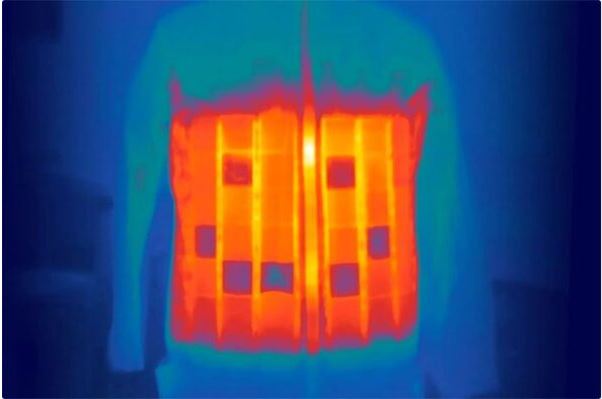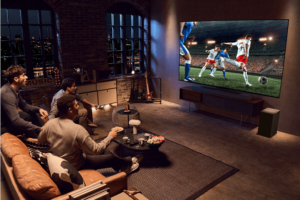Scientists are focusing on developing virtual reality technology so that users can not only perceive the three-dimensional environment by sight, but also smell.
According to a scientific study published last week in the journal Nature, engineers from Beijing Aerospace University and the University of Hong Kong have created a set of virtual reality (VR) glasses. special.
It helps users smell 30 different scents, including coffee, alcohol or pancakes.
“Recent human-machine interfaces have highlighted the importance of human sensory-based feedback such as vision, hearing, and touch in entertainment, medical treatment, or VR/AR ( augmented reality),” said the team.
“Smell plays a huge role in human cognitive experiences, and it is just as important as auditory and visual feedback.”
The breakthrough technology that the team is working on is to use electrodes to heat small pieces of paraffin wax containing incense to create odors. These new scent devices are also known as OGs. They will be placed right under the user’s nose during the experience.
The group also proposed a new design that is a VR headset capable of covering the user’s face. The new design was created to replace the outdated scent technology.
Old scenting technologies relied on bulky liquefied scent bottles, complicated attachments, or other rudimentary scenting functions.
Research suggests that OG flavoring devices could be used not only in virtual reality games but even to enhance the experience of distance classes.
Engineers also promise that the device could help dementia patients recover their memories.
In addition, the team says that some of the odors generated by the OG device can be used to calm the user’s emotions.
Because scent can evoke emotions through the recall of touching memories, OG can also be used to help dispel stress and depression in the user’s mood.
According to research, engineers are aiming to shrink the overall size of the OG to keep scents longer and limit the delay when users change scents.
Last year, OVR Technology, a virtual reality technology developer from the US, also made headlines when it announced a way to create smells in virtual space.
The company introduced a VR headset and an attached scent kit, which comes in a white box called the ION. When the user approaches an object in virtual space, such as a strawberry, they will smell the strawberry scent emanating from the ION.
According to OVR, the ION box has nine chemical compounds available, and they will be mixed together through pre-programmed signals to create hundreds of different scents.
OVR sees the integration of scent into the virtual space as the key to the future digital world.
OVR CEO Aaron Wisniewski said that scent will be an important part of the development of the metaverse virtual universe, being one of the key factors influencing human sensation.
In 2017, the Japanese company VAQSO also created a device called VAQSO VR attached to the popular VR glasses then such as Oculus Rift, PlayStation VR, Gear VR, HTC Vive.
Specifically, VAQSO VR will be a device that creates a scent that is true to the experience when users wear VR glasses to a place. For example, when users play 3D games, while fighting, they can smell gunpowder, walking in the forest can smell plants.
The VAQSO device is linked to a third-party VR headset via a micro USB or Bluetooth connection. It has a semicircle shape, embracing the area in front of the user’s face.
The device contains five replaceable scent cartridges, each containing 1 of the 15 fragrance oils the company offers.
When activated by code in a VR game the wearer is playing, the device selectively releases odors from the scent box. These smells are related to what’s going on in the game.
VAQSO says the company’s equipment can produce a “zombie” scent, among other smells including sea, burning fire or gunpowder, woods, wood, earth, coffee, caramel, chocolate, and curry. , fried chicken, mint, gas, flowers and perfume.
The company can also create custom scents requested by corporate customers at a cost of around $3,000 per scent.










